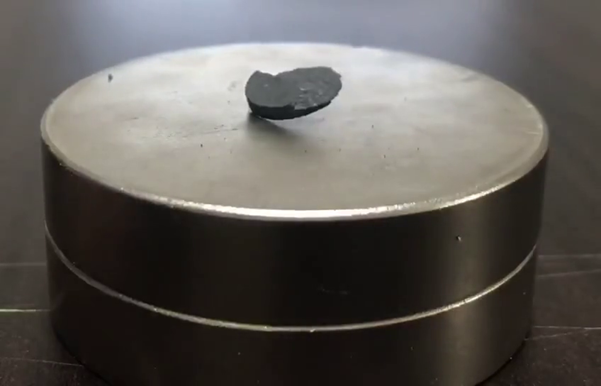Superconductors are a class of materials that display a number of exotic phenomena, most famously their lack of resistivity under the right conditions, allowing them to carry electrical current with no resistance.
These materials have many scientific applications, where high currents are desired (for example magnets for MRI machines) or where high sensitivity is achieved using superconductors to eliminate noise.

Permission: https://arxiv.org/abs/2307.12037
All known (or at least verified) superconducting materials only do so under conditions which prohibit easy implementation, such as very low temperatures (sub 100K, ~ -173C) or very high pressures (greater than 2 GPa). Superconducting materials remain very expensive to manufacture and maintain, to the extent that they are rarely seen by the average member of the public. A material that can exhibit superconductivity at temperatures and pressures more aligned with personal safety is not surprisingly an attractive proposition.
The Quantum Energy Research Centre in Seoul has recently released a pre-print paper suggesting successful measurement of superconductivity in a known material, LK-99, at ambient pressure and room temperature.
Such a discovery would be a monumental milestone in scientific history and would set the scene for rapid advancement in bringing a number of superconductivity-enabled products and techniques to a wider audience. However, there is growing doubt concerning the validity of the results reported.
First of all, LK-99 is not a novel material; it was first formulated in 1999 by researchers Sukbae Lee and Ji-Hoon Kim. The initially reported structure of LK-99 also does not directly correspond to the reported synthesis steps in the pre-print, with the steps of the synthesis setting out an unbalanced chemical reaction which requires additional components such as copper sulfide.
The evidence given for superconductivity in the pre-print might be considered far from conclusive, but it does provide a glimmer of hope that superconductivity could exist in the material. As is the case with all science, extraordinary claims require extraordinary evidence. The bar is particularly high here because proving a negative is so difficult – it is hard to conclusively prove that superconductivity at room temperature is impossible for a given material.
The pre-print shows a dramatic drop in electrical resistance at a measured critical temperature, as high as 400K (~126C). This is allegedly a drop to zero electrical resistance and indeed the paper reports that the current-voltage response is as expected for a superconductor in a narrow range at low currents. However, at high temperatures such as room temperature the accuracy of such measurements can be more difficult to verify.
Measurements performed by third parties since the release of the pre-print have so far failed to replicate the superconducting behaviour that was initially reported. Particularly of note is a paper produced by the Bejing National Laboratory for Condensed Matter Physics and Institute of Physics which compares measurements of a pure LK-99 sample and a sample contaminated with copper sulfide.
This paper finds that the pure LK-99 sample demonstrated no superconductivity, whilst the contaminated LK-99 demonstrated a sharp reduction in resistivity between 380K and 400K which follows hystertic behaviour. However, the resistivity does not drop to zero, but a very low value.
The paper goes on to discuss the magnetic response of the contaminated LK-99 sample and strongly suggest that the magnetic properties reported in the pre-print as demonstrating the Meissner effect are in fact artefacts of diamagnetism caused by the copper sulfide contaminant.
It would seem that so far there is little evidence to support the claim that the LK-99 sample studied in the pre-print actually demonstrated superconductivity, despite numerous proposals of theoretical models that could support a superconducting mode in the material.
There is unlikely to be a conclusive answer for us until the original sample is more extensively tested, or the sample can be correctly reproduced and tested by other laboratories.
In the meantime, the growing consensus seems to be that LK-99 is not a superconductor, or at least the LK-99 as described in the pre-print does not have a superconducting phase.
We look forward to peer-reviewed studies and further information on the (tenuous) discovery, and have high hopes for the technological advancement that could be on the horizon.
